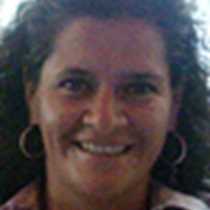Genovesa is one of the most pristine islands in the archipelago and our final destination of the Galapagos. At around 5:30 a.m. we entered the bay into the submerged caldera of this ancient volcano. Hundreds of birds welcomed us into the place—frigate birds, red-footed boobies, Nazca boobies, swallow-tailed gulls, storm petrels, and tropicbirds.
As we landed in Darwin’s Bay after breakfast, we stepped on a coralline beach surrounded by hundreds of birds. Young great frigate birds were waiting for the parents on their nests always wanting food. Immature red-footed boobies were everywhere, as well as Nazca boobies. It really is amazing that sometimes we needed to step out of the trail just because some of the birds where nesting in the middle of it! It was also an incredible opportunity to photograph the cactus finch feeding on the cactus!
Inside the bay the mangroves had become a “red-footed booby condominium.” Many of them will decide to nest here just because it’s an easy escape from the frigate birds that are constantly harassing them in order to get a free meal.
Snorkeling and kayaking where also activities that filled up our day today, probably as it is our last chance to get in the water in this enchanted archipelago.
Prince Philip's Steps, named after the Duke of Edinburgh, is the second and last walk of the week. It’s interesting to see that even though the birds are the same as this morning, the place itself is completely different. The trail goes through a Palo Santo forest to a storm petrel colony, where we found short-eared owls looking for petrels that used the cracks on the lava flow to nest.
As we got back to the ship at sunset we realized that this place is worth saving. Not just for us humans to see but for its own inhabitants that have worked hard to earn it!







